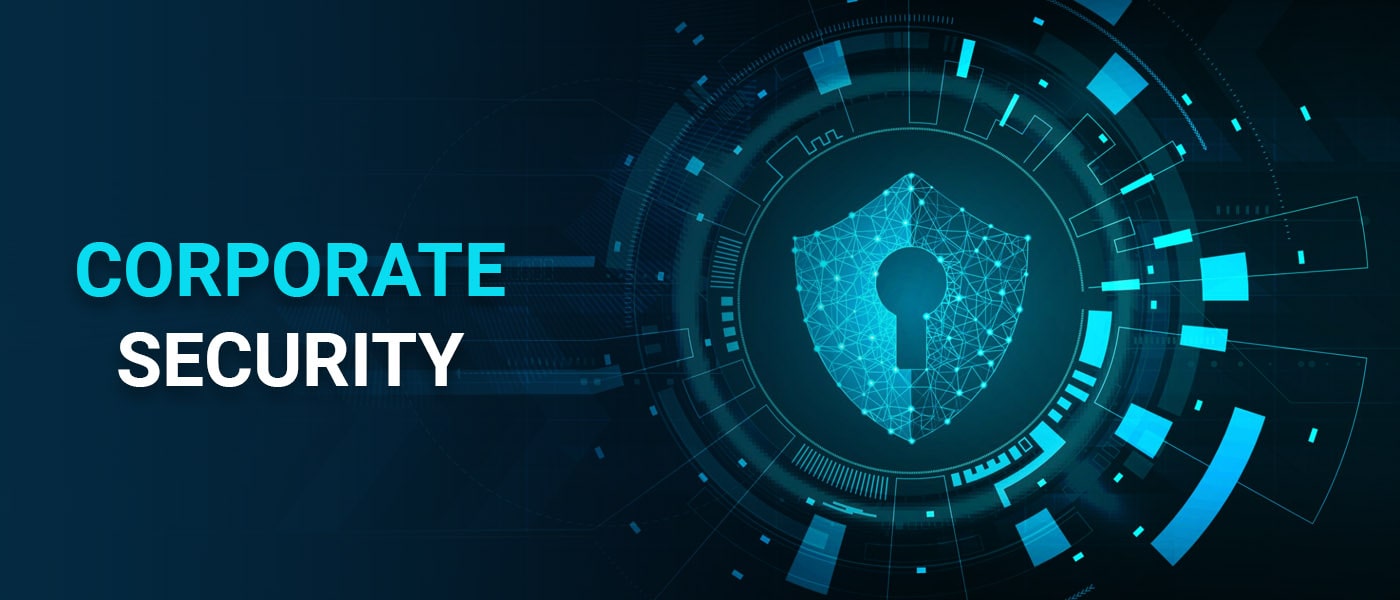Protecting Success: A Deep Study Corporate Security Methods
Protecting Success: A Deep Study Corporate Security Methods
Blog Article
From Cybersecurity to Physical Procedures: Reinforcing Company Safety in a Changing Globe
By incorporating the staminas of both cybersecurity and physical safety, business can create a detailed protection strategy that attends to the varied variety of risks they face. In this discussion, we will certainly discover the altering risk landscape, the need to incorporate cybersecurity and physical protection, the application of multi-factor authentication measures, the relevance of worker understanding and training, and the adaptation of protection procedures for remote workforces. By examining these key locations, we will certainly acquire valuable understandings into just how organizations can strengthen their company safety and security in an ever-changing globe.
Comprehending the Changing Hazard Landscape
The progressing nature of the modern-day globe necessitates an extensive understanding of the transforming hazard landscape for effective business safety. It is critical for organizations to stay notified and adapt their safety gauges to resolve these evolving risks.
One secret facet of recognizing the transforming threat landscape is recognizing the different kinds of threats that organizations face. Cybercriminals are continuously establishing new methods to make use of vulnerabilities in computer systems and networks. These hazards can range from malware and ransomware attacks to phishing scams and social engineering tactics. Additionally, physical threats such as theft, criminal damage, and business reconnaissance stay common issues for companies.
Tracking and examining the risk landscape is vital in order to identify possible dangers and vulnerabilities. This involves remaining updated on the most up to date cybersecurity fads, examining risk intelligence records, and conducting normal danger assessments. By recognizing the altering hazard landscape, companies can proactively implement ideal protection steps to minimize dangers and protect their properties, credibility, and stakeholders.
Integrating Cybersecurity and Physical Protection
Integrating cybersecurity and physical protection is important for comprehensive business protection in today's interconnected and electronic landscape. As organizations significantly depend on modern technology and interconnected systems, the boundaries in between physical and cyber threats are coming to be obscured. To efficiently guard against these dangers, an all natural method that integrates both cybersecurity and physical security steps is crucial.
Cybersecurity focuses on securing electronic assets, such as networks, information, and systems, from unauthorized accessibility, disruption, and theft. Physical protection, on the other hand, encompasses procedures to protect physical assets, individuals, and centers from threats and vulnerabilities. By incorporating these 2 domains, companies can resolve susceptabilities and hazards from both digital and physical angles, thus enhancing their overall safety pose.
The assimilation of these 2 self-controls permits a much more thorough understanding of safety and security dangers and enables a unified feedback to incidents. As an example, physical access controls can be boosted by integrating them with cybersecurity protocols, such as two-factor verification or biometric identification. Cybersecurity procedures can be enhanced by physical protection procedures, such as monitoring cameras, alarm systems, and secure access points.

Carrying Out Multi-Factor Authentication Steps
As organizations increasingly prioritize comprehensive safety and security steps, one effective technique is the execution of multi-factor authentication actions. Multi-factor verification (MFA) is a protection technique that requires customers to provide several forms of identification to access a system or application. This strategy includes an additional layer of security by combining something the individual recognizes, such as a important source password, with something they have, like a fingerprint or a security token.
By applying MFA, companies can substantially improve their safety and security posture - corporate security. Traditional password-based authentication has its constraints, as passwords can be conveniently jeopardized or neglected. MFA alleviates these risks by including an additional authentication variable, making it extra difficult for unauthorized individuals to obtain access to delicate information
There are a number of types of multi-factor authentication methods readily available, consisting of biometric verification, SMS-based verification codes, and equipment tokens. Organizations need to assess their specific demands and choose the most ideal MFA remedy for their needs.
Nevertheless, the execution of MFA need to be meticulously prepared and implemented. It is critical to strike an equilibrium between safety and security and use to stop individual frustration and resistance. Organizations should likewise consider possible compatibility concerns and provide sufficient training and support to make certain a smooth shift.
Enhancing Employee Understanding and Training
To strengthen company protection, companies have to focus on enhancing staff member awareness and training. In today's quickly advancing hazard landscape, workers play a critical duty in protecting an organization's sensitive information and possessions. Regrettably, lots of protection breaches take place because of human error or absence of awareness. Therefore, companies require to purchase comprehensive training programs to enlighten their staff members concerning potential threats and the very best methods for reducing them.
Reliable worker recognition and training programs need to cover a large range of subjects, consisting of information protection, phishing assaults, social design, password hygiene, and physical safety measures. These programs ought to be customized to the particular requirements and obligations of different worker duties within the company. Normal training sessions, simulations, and workshops can help employees establish the necessary skills and expertise to recognize and respond to protection threats properly.
Additionally, companies ought to encourage a culture of safety awareness and give continuous updates and reminders to keep workers notified concerning the newest dangers and mitigation techniques. This can be done with inner interaction channels, such as e-newsletters, intranet sites, and e-mail projects. By cultivating a security-conscious labor force, companies can considerably decrease the possibility link of safety cases and protect their important possessions from unauthorized gain access to or concession.

Adapting Safety And Security Steps for Remote Labor Force
Adjusting company safety measures to accommodate a remote workforce is essential in guaranteeing the protection of delicate information and properties (corporate security). With the enhancing pattern of remote job, organizations have to execute suitable safety and security measures to reduce the dangers associated with this brand-new way of working
One important facet of adapting safety measures for remote work is establishing protected interaction networks. Encrypted messaging platforms and virtual personal networks (VPNs) can assist protect delicate information and prevent unapproved gain access to. Furthermore, companies should implement making use of solid passwords and multi-factor verification to enhance the safety and security of remote accessibility.
An additional essential factor to consider is the application of safe remote access services. This includes giving employees with secure access to company sources and data through virtual desktop computer facilities (VDI), remote desktop computer procedures (RDP), or cloud-based services. These modern technologies make sure that sensitive info continues to be secured while making it possible for workers to do their functions effectively.

Last but not least, detailed protection awareness training is critical for remote staff members. Training sessions must cover ideal techniques for securely accessing and taking care of delicate info, recognizing and reporting phishing attempts, and preserving the overall cybersecurity hygiene.
Final Thought
In verdict, as the danger landscape continues to progress, it is essential for organizations to reinforce their protection measures both in the cyber and physical domain names. Integrating cybersecurity and physical protection, applying multi-factor authentication procedures, and boosting staff member recognition and view publisher site training are vital actions towards attaining robust business protection.
In this discussion, we will certainly discover the transforming hazard landscape, the requirement to integrate cybersecurity and physical security, the implementation of multi-factor verification actions, the value of staff member recognition and training, and the adjustment of protection procedures for remote labor forces. Cybersecurity steps can be complemented by physical protection steps, such as monitoring cams, alarm systems, and protected access points.
As organizations increasingly focus on detailed safety and security measures, one efficient method is the execution of multi-factor authentication procedures.In final thought, as the risk landscape proceeds to progress, it is important for companies to strengthen their safety gauges both in the cyber and physical domains. Integrating cybersecurity and physical safety and security, applying multi-factor verification measures, and enhancing worker understanding and training are crucial steps towards achieving robust business safety.
Report this page